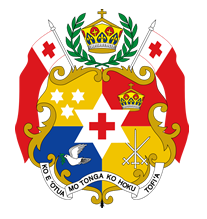Tonga: Government
Key Figures
- Chief of State:
- King Tupou VI
- Head of Government:
- Prime Minister Siaosi Sovaleni
Overview
- Government Name:
- Kingdom of Tonga
- Constitution:
- Adopted: 1875; Establishes the structure of the Tongan government in terms of branches: executive, judiciary, and legislative. Additionally, the constitution is separated into three parts: the declaration of rights of the Tongan people, the form of government, and part three provides the laws for land ownership, succession, and sale.
- Government Type:
- Constitutional Monarchy

Index of Economic Freedom
Grades each country on a scale of 0 to 100, based on ten freedoms, with 100 representing the greatest amount of economic autonomy from government intervention. Source: Heritage Foundation (2023)
Country Risk Rating
There is no Country Risk Rating for Tonga
Government Branches
| Main Powers | Election Process | Election Cycle 1 | |
|---|---|---|---|
| Executive | Empowered to advise the King in his capacity as Head of State and Fountain of Justice. |
Prime minister is elected by parliament. |
Prime minister: 4 years |
| Judicial | Supreme Court has original jurisdiction to try civil matters when the amount in dispute exceeds T$500 and in all matters of divorce, probate, and admiralty. Appeals from decisions of the Supreme Court may be heard by the Court of Appeal, which is the final court of appeal for most matters. |
Judge appointments by King need consent by Legislative Assembly. |
Until dismissal by monarch |
| Legislative | Power to draft and enact laws. |
In the Legislative Assembly (Fale Alea), 9 members are elected by hereditary state rulers and 17 members are elected by plurality vote in single-member constituencies. |
4 years |
Regional Trade Blocs
No Regional Trade BlocsInternational Organization Participation [2]
Environmental Agreements [3]
Tax Information [2]
- Tax Authority:
- Information not available
- Tax Name:
- Information not available
Sources:
- ElectionGuide http://www.electionguide.org/
- EY, http://www.ey.com
- CIA World Factbook, https://www.cia.gov/the-world-factbook/
- U.S. Bilateral Relations Fact Sheets http://www.state.gov/r/pa/ei/bgn/


